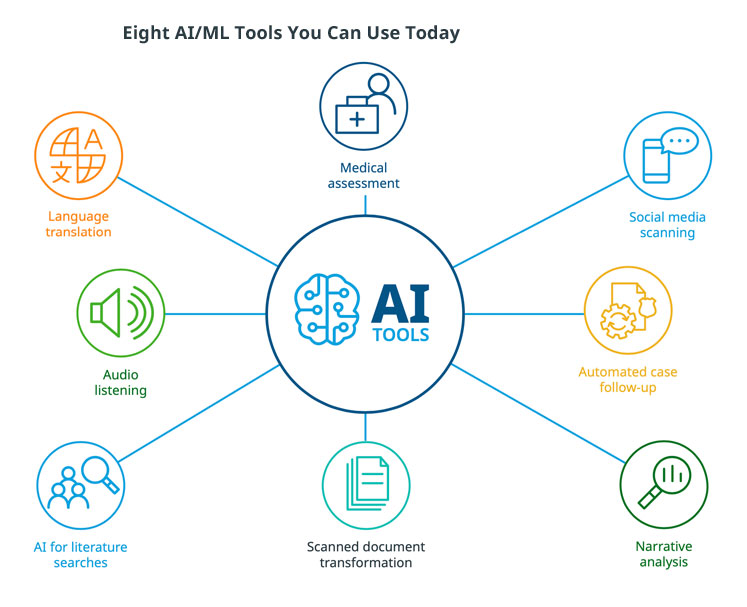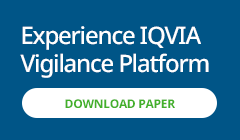
Pharmacovigilance (PV) leaders are finally embracing the idea that machine learning (ML) and artificial intelligence (AI) are the most efficient ways to automate and streamline many types of PV tasks. However, their ambitions are often tempered by not knowing what is available or what is real and what is hype. And importantly, whether they are ready for change.
The good news is that these AI-driven solutions can be integrated in stages, easing the transformation process for PV teams while delivering measurable benefits from day one.
To help you see the possibilities, we have created an overview of some of the technologies currently in use by companies of all sizes. Whether you are an emerging biopharma or a company processing hundreds of thousands of AEs, automation can help you today.

AI FOR LITERATURE SEARCHES
PV professionals could dedicate hundreds of hours a month reading articles and abstracts in search of adverse event signals and still not see them all.
Smart algorithms can not only take over this laborious and time-consuming task, they can also read more content in less time with greater accuracy, and even highlight the page and paragraph where a specific event, product, or condition is mentioned. These algorithms are far more likely to identify obscure references than human readers, and they free up PV professionals to spend their time on more value-driven tasks
From a human resource perspective, monitoring global social media platforms for mentions of adverse events, brand names, and relevant conditions is an almost impossible task, but it’s exactly the kind of task AI was designed to do. AI can simultaneously monitor multiple social media platforms and online forums in any language 24 hours a day. These tools can be trained to identify any combination of terms or conditions, and even search for obscure references in narrative posts, such as conversations. In addition, AI can do things that are impossible with current tools such as link symptoms or events, the drugs being used and a patient’s emotional state, something that is particularly useful for conditions like depression or new drugs with little or no formal history.
AUDIO LISTENING
AI tools can also be deployed to scan audio files in call centers where adverse events may be mentioned in unrelated contexts. For example, if a customer wants their money back because a product made them vomit, a service representative may not know to report that as an adverse event, but an algorithm can flag it for a PV expert to review.
LANGUAGE TRANSLATION
Large organizations may have as many as 40 percent of source documents requiring translation into one or more languages (and back again), which is expensive, error prone, and hard to staff. One of the biggest challenges in PV is finding people with both the language skills and the clinical expertise to accurately translate complex source documents bidirectionally and cull relevant information to send a response. Today’s AI tools can do all of this, automatically machine-translating documents and extracting relevant safety details for case processing at high-speed, with great accuracy. IQVIA’s neural machine translation (NMT) solution delivers a blue score (an industry standard way of measuring translation accuracy) in excess of 85 -- which is higher than the average qualified translator -- and it can translate documents in 25 languages and growing.
SCANNED DOCUMENT TRANSFORMATION
AI tools can just as easily read and translate scanned documents – which are essentially pictures – into written documents, placing all of the data in the correct fields and formats. Now, no matter how you receive a case, in whatever format or language, you can have it quickly transformed into an electronic English-language case.
NARRATIVE ANALYSIS
Advanced AI tools do far more than cut and paste information from one document to another. AI can read and interpret a case narrative--even from a completely unstructured source such as an email or social media posts, extract the relevant information, and populate case fields, all with minimal human guidance.
MEDICAL ASSESSMENT
These support tools can suggest whether a signal is relevant--in real time--based on the context, causality, and frequency of similar reports. For example, if an algorithm finds that a user of a specific drug had a cardiac episode, it can scan all other cases in available datasets to look for similar events, and predict likely outcomes based on prior events (i.e. hospitalization), even if the outcome isn’t mentioned. These tools are not meant to replace human reviews, but rather to speed PV experts’ access to information, and offer historical context to help them make the best decisions.
AUTOMATED CASE FOLLOW-UP
A majority of adverse event case files require some level of follow-up to capture missing data or verify information. This involves a series of mandated emails or phone calls, which are time-consuming and often get ignored. AI tools can not only automate that follow-up process, they can also be trained to proactively request missing information at the time the report is made, based on the information being provided, reducing the need for follow-ups together. This saves time, speeds up the reporting process, and results in higher quality data.
Conclusion
Organizations of all sizes have already deployed AI-powered PV automation tools, individually or as part of a broader technology transformation initiative. These tools have delivered significant time and cost savings, reduced risks, and freed up pharmacovigilance professionals from wasting time on highly manual, routine tasks. At a time when talent scarcity makes it difficult to keep PV teams staffed, these tools are vital for managing increasing PV workloads and making the best use of the human assets on your team.
The tools are real, as are the benefits, so why wait?
